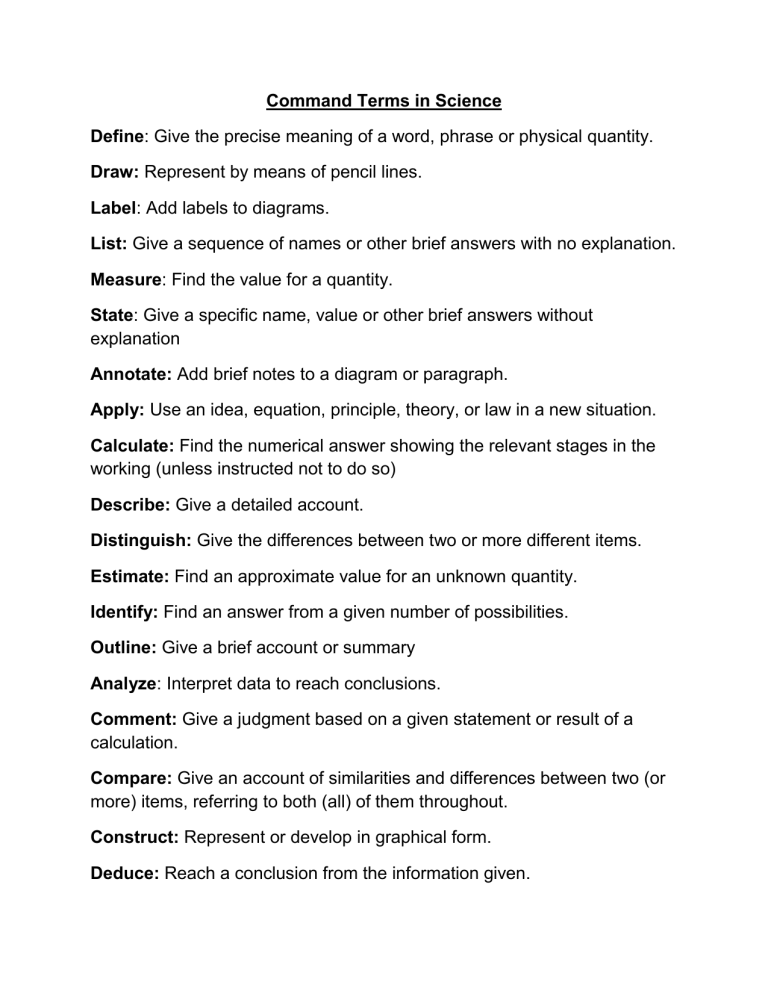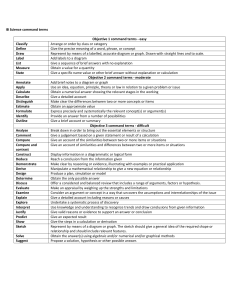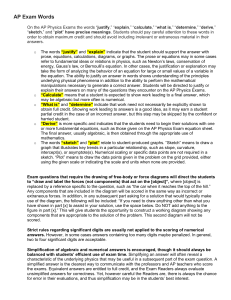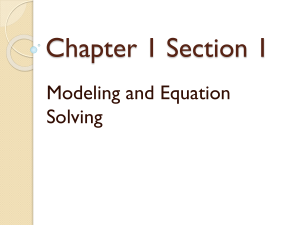
Command Terms in Science Define: Give the precise meaning of a word, phrase or physical quantity. Draw: Represent by means of pencil lines. Label: Add labels to diagrams. List: Give a sequence of names or other brief answers with no explanation. Measure: Find the value for a quantity. State: Give a specific name, value or other brief answers without explanation Annotate: Add brief notes to a diagram or paragraph. Apply: Use an idea, equation, principle, theory, or law in a new situation. Calculate: Find the numerical answer showing the relevant stages in the working (unless instructed not to do so) Describe: Give a detailed account. Distinguish: Give the differences between two or more different items. Estimate: Find an approximate value for an unknown quantity. Identify: Find an answer from a given number of possibilities. Outline: Give a brief account or summary Analyze: Interpret data to reach conclusions. Comment: Give a judgment based on a given statement or result of a calculation. Compare: Give an account of similarities and differences between two (or more) items, referring to both (all) of them throughout. Construct: Represent or develop in graphical form. Deduce: Reach a conclusion from the information given. Command Terms in Science Derive: Manipulate a mathematical relationship( s) to give a new equation or relationship. Design: Produce a plan, simulation, or model. Determine: Finds the only possible answer. Discuss: Give an account including, where possible, a range of agreement for and against the relative importance of various factors, or comparisons of alternative hypothesis. Evaluation: Make an appraisal by weighing up the strengths and limitations. Explain: Give a detailed account of causes, reasons, mechanisms. Predict: Give an expected result. Show: Give the steps in a calculations or deviations. Sketch: Represent by means of a diagram or graph (labeled as appropriate) the sketch should give a general idea of the required shape or relationship, and should include relevant features. Solve: Obtain the answer using appropriate methods (algebraic and /or numerical methods) Suggest: Propose a solution, hypothesis or others possible answers. Summarize: Abstract a general theme or major point (s).





